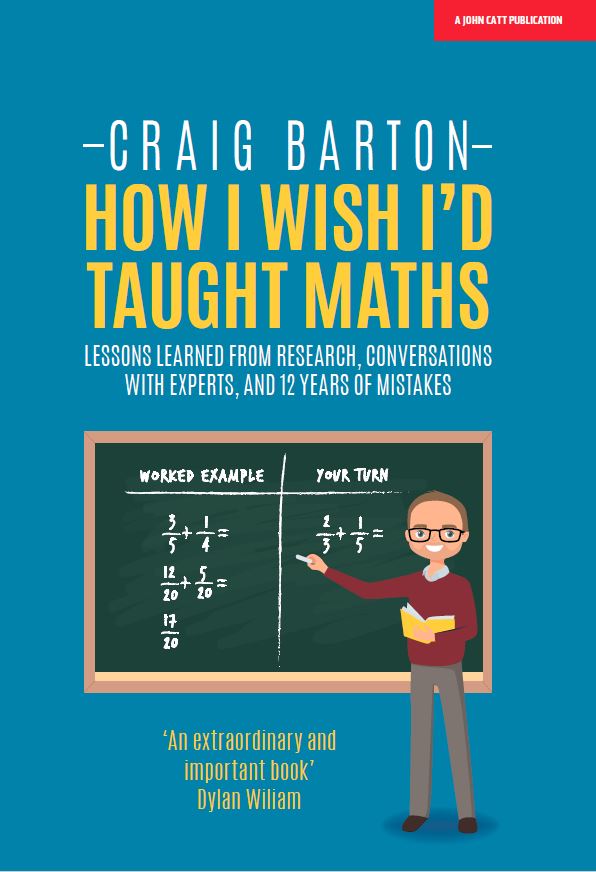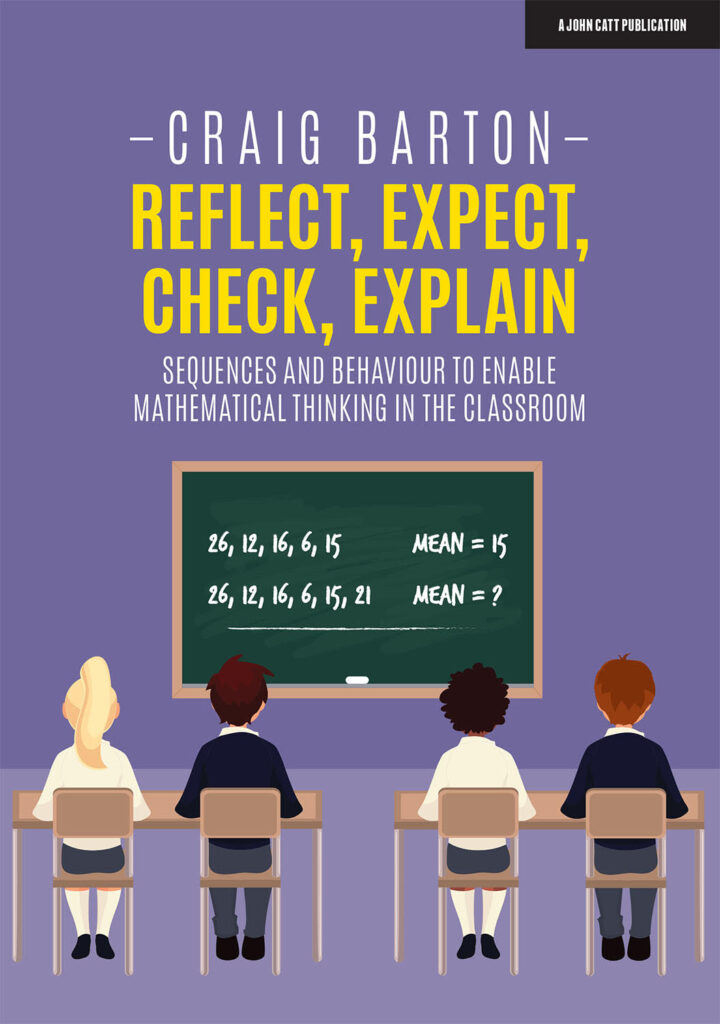2023 Key Stage 2 Mathematics Paper 2: Reasoning
⚠️ Non-Calculator Paper
You must not use a calculator to answer any questions in this test.
Mark Scheme Legend
- M1 = Method mark (correct method applied)
- A1 = Accuracy mark (correct answer)
Table of Contents
- Question 1 (Time)
- Question 2 (Ordering)
- Question 3 (Coordinates)
- Question 4 (Data)
- Question 5 (Reasoning)
- Question 6 (Money)
- Question 7 (Sequences)
- Question 8 (Rounding)
- Question 9 (Geometry)
- Question 10 (Reverse Ops)
- Question 11 (Place Value)
- Question 12 (Symmetry)
- Question 13 (Fractions)
- Question 14 (Angles)
- Question 15 (Number Line)
- Question 16 (Measures)
- Question 17 (Division)
- Question 18 (Fractions)
- Question 19 (Division)
- Question 20 (Multiplication)
- Question 21 (Conversion)
- Question 22 (Area)
- Question 23 (Percentages)
- Question 24 (Pie Chart)
- Question 25 (Ratio/Mass)
- Question 26 (Algebra)
Question 1 (1 mark)
Circle the clock that shows 5 minutes past 11.
Why we do this:
We need to find the time “5 minutes past 11”. This means the hour hand should be pointing towards the 11 (just past it) and the minute hand should be pointing to the 1 (which represents 5 minutes).
Analysis of the clocks:
- Clock A shows approx 1:55 (5 minutes to 2).
- Clock B shows 11:05 (5 minutes past 11).
- Clock C shows approx 5:55.
- Clock D shows approx 11:25.
Final Answer: Clock B is the correct clock.
Question 2 (1 mark)
Write these temperatures in order, starting with the lowest.
6°C -4°C 1°C -10°C 3°C
Why we do this:
We are ordering integers. “Lowest” means the coldest temperature, which will be the negative number furthest from zero.
Comparison:
Negative numbers are lower than positive numbers.
Comparing negatives: -10 is lower (colder) than -4.
Comparing positives: 1, 3, 6.
Order: -10, -4, 1, 3, 6.
Final Answer: -10°C, -4°C, 1°C, 3°C, 6°C
Question 3 (1 mark)
ABC is a triangle.
What are the coordinates of point C?
Answer: ( ______ , ______ )
Why we do this:
To find the coordinates of a point, we first read along the bottom (x-axis) to find the first number, then read up the side (y-axis) to find the second number.
Reading the graph:
1. Start at the origin (0).
2. Move along the corridor (x-axis) until you are directly under point C. The number is 6.
3. Move up the stairs (y-axis) to point C. The number is 2.
Final Answer: ( 6 , 2 )
Question 4 (1 mark)
Some children choose their favourite zoo animal. The pictogram shows the results.
Key: ⚪ stands for 2 children
penguin: ⚪ ⚪ ⚪
elephant: ⚪ ⚪ ◐
tiger: ⚪ ⚪ ⚪ ⚪ ⚪ ⚪
giraffe: ⚪ ◐
How many more children choose tiger than elephant?
Why we do this:
We need to interpret the key. A full circle (⚪) represents 2 children. A half circle (◐) represents half of 2, which is 1 child.
Calculate Tiger:
There are 6 full circles.
\(6 \times 2 = 12\) children.
Calculate Elephant:
There are 2 full circles and 1 half circle.
\((2 \times 2) + 1 = 4 + 1 = 5\) children.
Calculate Difference:
\(12 – 5 = 7\)
Final Answer: 7
Question 5 (1 mark)
Cars and motorbikes are parked in a street.
- Car: 4 wheels
- Motorbike: 2 wheels
Stefan counts 3 motorbikes and 5 cars.
He counts 28 wheels altogether.
Explain why Stefan cannot be correct.
Why we do this:
We need to calculate the actual total number of wheels based on the vehicles Stefan counted and compare it to his total of 28.
Calculate wheels from cars:
5 cars \(\times\) 4 wheels = 20 wheels.
Calculate wheels from motorbikes:
3 motorbikes \(\times\) 2 wheels = 6 wheels.
Total wheels:
20 + 6 = 26 wheels.
Conclusion:
26 is not 28. Stefan has counted too many wheels (or perhaps missed a motorbike!).
Final Answer: Stefan is incorrect because 3 motorbikes and 5 cars have 26 wheels in total \((3 \times 2) + (5 \times 4) = 26\), but he counted 28.
Question 6 (1 mark)
Kirsty buys 1 litre of apple juice for £1.39.
She pays with a £5 note.
How much change does Kirsty get?
Why we do this:
We need to subtract the cost of the juice from the amount paid.
Calculation (£5.00 – £1.39):
We can count up from £1.39 to £5.00:
- £1.39 + 1p = £1.40
- £1.40 + 60p = £2.00
- £2.00 + £3.00 = £5.00
Total change: £3 + 60p + 1p = £3.61
Or using column subtraction:
4 9 1 5.0 0 - 1.3 9 ------- 3.6 1
Final Answer: £3.61
Question 7 (1 mark)
Here is a number sequence.
75 50 25 ______ ______
Write the next two numbers in the sequence.
Why we do this:
Look at the difference between the numbers. From 75 to 50 is a subtract 25 step. From 50 to 25 is a subtract 25 step. The rule is “subtract 25”.
Calculating the next numbers:
25 – 25 = 0
0 – 25 = -25
Final Answer: 0 and -25
Question 8 (1 mark)
In 2012, there were 24,372 schools in the United Kingdom.
Round the number of schools to the nearest hundred.
Why we do this:
To round to the nearest hundred, we look at the hundreds digit (3) and the digit to its right (the tens digit, 7).
Steps:
Number: 24,372
Hundreds digit: 3 (representing 300).
Next digit is 7. Since 7 is 5 or more, we round up.
The 300 becomes 400.
Final Answer: 24,400
Question 9 (1 mark)
Here are some diagrams showing parts of a circle.
Match each diagram to the name of the dashed line.
1. Line across centre
2. Line from centre to edge
3. Dashed line around outside
A. circumference
B. diameter
C. radius
Definitions:
- Circumference: The distance all the way around the outside of the circle.
- Diameter: A straight line passing from side to side through the centre.
- Radius: A straight line from the centre to the circumference.
Matches:
- Line across centre \(\rightarrow\) diameter
- Line from centre to edge \(\rightarrow\) radius
- Dashed line around outside \(\rightarrow\) circumference
Question 10 (1 mark)
Ken thinks of a number.
He divides it by 3.
The answer is 72.
What number was Ken thinking of?
Why we do this:
We need to work backwards (inverse operations). The opposite of dividing by 3 is multiplying by 3.
Calculation:
\(72 \times 3\)
\(70 \times 3 = 210\)
\(2 \times 3 = 6\)
\(210 + 6 = 216\)
Final Answer: 216
Question 11 (2 marks)
a) Write the number that is one thousand more than 19,039.
b) Write the number that is one hundred less than 19,039.
Why we do this:
We need to identify the correct place value column and adjust it.
Part a:
19,039 + 1,000. Look at the thousands column (9). 9 + 1 = 10, so we carry over.
19,000 + 1,000 = 20,000.
Answer: 20,039.
Part b:
19,039 – 100. Look at the hundreds column (0). We need to exchange from the thousands.
190 hundreds – 1 hundred = 189 hundreds.
Answer: 18,939.
Final Answer:
a) 20,039
b) 18,939
Question 12 (1 mark)
Draw all the lines of symmetry on this shape.
Why we do this:
A line of symmetry is a mirror line where one side is the exact reflection of the other.
Identifying lines:
1. Vertical: A line straight down the middle (through the points of the triangles). The left side mirrors the right.
2. Horizontal: A line straight across the middle. The top triangle mirrors the bottom triangle.
Final Answer: Draw one vertical line down the center and one horizontal line across the center.
Question 13 (1 mark)
\(\frac{1}{5}\) of a number is 22.
What is the number?
Why we do this:
If one part (one fifth) is 22, then the whole number (five fifths) is 5 times that amount.
Calculation:
\(22 \times 5\)
\(20 \times 5 = 100\)
\(2 \times 5 = 10\)
\(100 + 10 = 110\)
Final Answer: 110
Question 14 (1 mark)
Measure angle \(a\).
Answer: ______ degrees
Why we do this:
This requires a protractor. The angle is obtuse (greater than 90°).
Method:
1. Place the centre of the protractor on the vertex (corner).
2. Align the zero line with the horizontal line.
3. Read the scale that starts at 0. Since it’s obtuse, we are looking for a number between 90 and 180.
The mark scheme accepts answers in the range 128° to 132°.
Final Answer: 130 degrees (accept 128-132)
Question 15 (1 mark)
Here are four fractions:
\(\frac{1}{3}\) \(\frac{1}{6}\) \(\frac{1}{4}\) \(\frac{1}{2}\)
Write the fractions in the correct place on the number line.
Why we do this:
To order these fractions, it helps to give them a common denominator. The number line goes from 0 to 1. The ticks seem to represent 12ths (because 3, 4, 6, 2 all go into 12).
Convert to 12ths:
- \(\frac{1}{6} = \frac{2}{12}\) (First box)
- \(\frac{1}{4} = \frac{3}{12}\) (Second box)
- \(\frac{1}{3} = \frac{4}{12}\) (Third box)
- \(\frac{1}{2} = \frac{6}{12}\) (Fourth box)
Final Answer (Left to Right): \(\frac{1}{6}\), \(\frac{1}{4}\), \(\frac{1}{3}\), \(\frac{1}{2}\)
Question 16 (1 mark)
One day last year, the rate of rainfall from 6:30 am until 9:00 am was 2 millimetres per hour.
What was the total rainfall from 6:30 am until 9:00 am?
Why we do this:
We need to calculate how many hours passed, then multiply that by the rate of rainfall.
Calculate Time Duration:
6:30 am to 7:30 am = 1 hour
7:30 am to 8:30 am = 1 hour
8:30 am to 9:00 am = 30 minutes (0.5 hours)
Total time = 2.5 hours.
Calculate Total Rainfall:
\(2.5 \text{ hours} \times 2 \text{ mm/hour} = 5 \text{ mm}\)
Final Answer: 5 mm
Question 17 (2 marks)
The manager of a flower shop orders 4 boxes of red roses.
There are 50 roses in each box.
The manager makes bunches with 6 roses in each bunch.
What is the greatest number of bunches that can be made?
Why we do this:
First, find the total number of roses. Then divide by the size of a bunch to find how many full bunches we can make.
Step 1: Total roses
\(4 \text{ boxes} \times 50 \text{ roses} = 200 \text{ roses}\).
Step 2: Divide by 6
\(200 \div 6\)
We know \(6 \times 30 = 180\). Remainder is 20.
We know \(6 \times 3 = 18\). Remainder is 2.
So \(30 + 3 = 33\) bunches, with 2 roses left over.
Final Answer: 33
✓ (2 marks)
Question 18 (2 marks)
A cinema sells tickets at three different prices.
- \(\frac{1}{20}\) of the tickets are price A.
- \(\frac{3}{5}\) of the tickets are price B.
- The rest of the tickets are price C.
What fraction of the tickets are price C?
Why we do this:
We need to add the fractions for A and B together, then subtract that total from 1 (the whole) to find C. We need a common denominator.
Step 1: Common Denominator
Price A is \(\frac{1}{20}\). Price B is \(\frac{3}{5}\).
Convert \(\frac{3}{5}\) to 20ths: multiply top and bottom by 4.
\(\frac{3 \times 4}{5 \times 4} = \frac{12}{20}\).
Step 2: Add A and B
\(\frac{1}{20} + \frac{12}{20} = \frac{13}{20}\).
Step 3: Find the rest (C)
Whole = \(\frac{20}{20}\).
\(\frac{20}{20} – \frac{13}{20} = \frac{7}{20}\).
Final Answer: \(\frac{7}{20}\)
✓ (2 marks)
Question 19 (1 mark)
Write the missing number to make this division correct.
\(15,000 \div \square = 75\)
Why we do this:
In a division sum like \(a \div b = c\), we can find \(b\) by doing \(a \div c\).
Example: \(10 \div 2 = 5\), and \(10 \div 5 = 2\).
Calculation:
We need to do \(15,000 \div 75\).
We know \(75 \times 2 = 150\).
So \(75 \times 200 = 15,000\).
Final Answer: 200
Question 20 (2 marks)
Write the two missing digits to make this long multiplication correct.
× ⬜ 3
———–
9 7 0 5
1 6 1 7 5 0
———–
1 7 1 4 5 5
Why we do this:
We can use the completed rows to find the missing numbers. The first row (9705) is the result of multiplying the top number by 3.
Finding the top missing digit:
The first row of working is \(9705\). This comes from \( \dots 235 \times 3\).
Let’s divide: \(9705 \div 3 = 3235\).
So the top number is 3235. The missing digit is 3.
Finding the bottom missing digit:
The second row of working is \(161750\). This comes from \(3235 \times \text{missing tens}\).
\(161750 \div 3235 = 50\).
So the multiplier is 53. The missing digit is 5.
Final Answer: Top box: 3, Bottom box: 5
✓ (2 marks)
Question 21 (2 marks)
The height of the tallest person in history is 8 feet 11 inches.
Conversion table:
- One foot = 30 centimetres
- One inch = 2.5 centimetres
Use this conversion table to calculate the height of the tallest person, in centimetres.
Why we do this:
We need to convert the feet to cm and the inches to cm separately, then add them together.
Step 1: Convert feet
\(8 \times 30 = 240\) cm.
Step 2: Convert inches
\(11 \times 2.5\)
\(10 \times 2.5 = 25\)
\(1 \times 2.5 = 2.5\)
\(25 + 2.5 = 27.5\) cm.
Step 3: Total
\(240 + 27.5 = 267.5\) cm.
Final Answer: 267.5 cm
✓ (2 marks)
Question 22 (1 mark)
Here is a regular hexagon.
The area of the large shaded triangle is double the area of the small shaded triangle.
What fraction of the whole hexagon is the shaded area?
Why we do this:
A regular hexagon can be divided into 6 equal equilateral triangles. If we split each of those in half, we get 12 equal small right-angled triangles.
Visualising the fraction:
The small shaded triangle represents 1 of these 12 parts (\(\frac{1}{12}\)).
The large shaded triangle is double the small one, so it represents 2 of these 12 parts (\(\frac{2}{12}\)).
Total shaded = \(\frac{1}{12} + \frac{2}{12} = \frac{3}{12}\).
Simplifying: \(\frac{3}{12} = \frac{1}{4}\).
Final Answer: \(\frac{1}{4}\) (or \(\frac{3}{12}\))
Question 23 (2 marks)
A small box contains 650 grams of cereal.
A large box contains 20% more cereal.
One portion of cereal is 40 grams.
How many full portions are in a large box?
Why we do this:
Step 1: Find the mass of the large box. Step 2: Divide that mass by 40 to find the portions.
Step 1: Calculate 20% increase
10% of 650 = 65.
20% of 650 = 130.
Large box = \(650 + 130 = 780\) grams.
Step 2: Divide by 40
\(780 \div 40\) is the same as \(78 \div 4\).
\(78 \div 2 = 39\).
\(39 \div 2 = 19.5\).
Step 3: Full portions
We have 19.5 portions, so we have 19 full portions.
Final Answer: 19
✓ (2 marks)
Question 24 (1 mark)
1,200 pupils were asked this question: “How important is it to have a break when using a screen?”
This pie chart shows the results.
- Not important: 12%
- Quite important: 41%
- Very important: The rest
How many pupils answered ‘Very important’?
Why we do this:
The whole pie chart represents 100%. We need to find the missing percentage and then calculate that amount of 1,200.
Step 1: Find percentage for ‘Very important’
\(100\% – (12\% + 41\%) = 100\% – 53\% = 47\%\).
Step 2: Calculate 47% of 1,200
\(47\% = 0.47\).
\(1200 \times 0.47 = 12 \times 47\).
\(12 \times 40 = 480\)
\(12 \times 7 = 84\)
\(480 + 84 = 564\).
Final Answer: 564
Question 25 (3 marks)
There are 25 sheets of paper in a small pack.
There are 500 sheets in a large pack.
a) How many small packs make one large pack?
The mass of the paper in the large pack is 2.4 kilograms.
b) What is the mass of one sheet of paper, in grams?
Why we do this:
Part (a) is division. Part (b) involves unit conversion (kg to g) and then division.
Part a:
\(500 \div 25 = 20\).
Answer: 20 packs.
Part b:
1. Convert mass to grams: \(2.4 \text{ kg} = 2400 \text{ g}\).
2. Divide total mass by number of sheets (500).
\(2400 \div 500 = 24 \div 5\).
\(24 \div 5 = 4.8\).
Final Answer:
a) 20
b) 4.8 g
✓ (3 marks)
Question 26 (2 marks)
This formula is used to estimate the mass (in kilograms) of young children.
mass = 2 × (age in years + 5)
a) Stefan’s sister is 4 years of age. Use the formula to estimate her mass.
b) The mass of Megan’s brother is 16 kilograms. Use the formula to estimate his age.
Why we do this:
Part (a) is substitution. Part (b) involves solving an equation (working backwards).
Part a:
Age = 4.
Mass = \(2 \times (4 + 5) = 2 \times 9 = 18\).
Part b:
Mass = 16.
\(16 = 2 \times (\text{age} + 5)\).
Divide by 2: \(8 = \text{age} + 5\).
Subtract 5: \(\text{age} = 3\).
Final Answer:
a) 18 kg
b) 3 years








